What is Wax Carving? with award-winning artist-craftsman Russell Lownsbrough
What is wax carving, and how difficult is it to add this 6,000-year-old technique to your creative tool belt? We found out in a recent interview with Russell Lownsbrough, an award-winning artist-craftsman renowned for his proficiency in the technique. Russell is an authority on the subject of wax carving and casting and has employed the skill to create a catalogue of work spanning more than twenty years, ranging from the avant-garde to the traditional, and including detailed figurines, animals, flowers and mythological beasts.
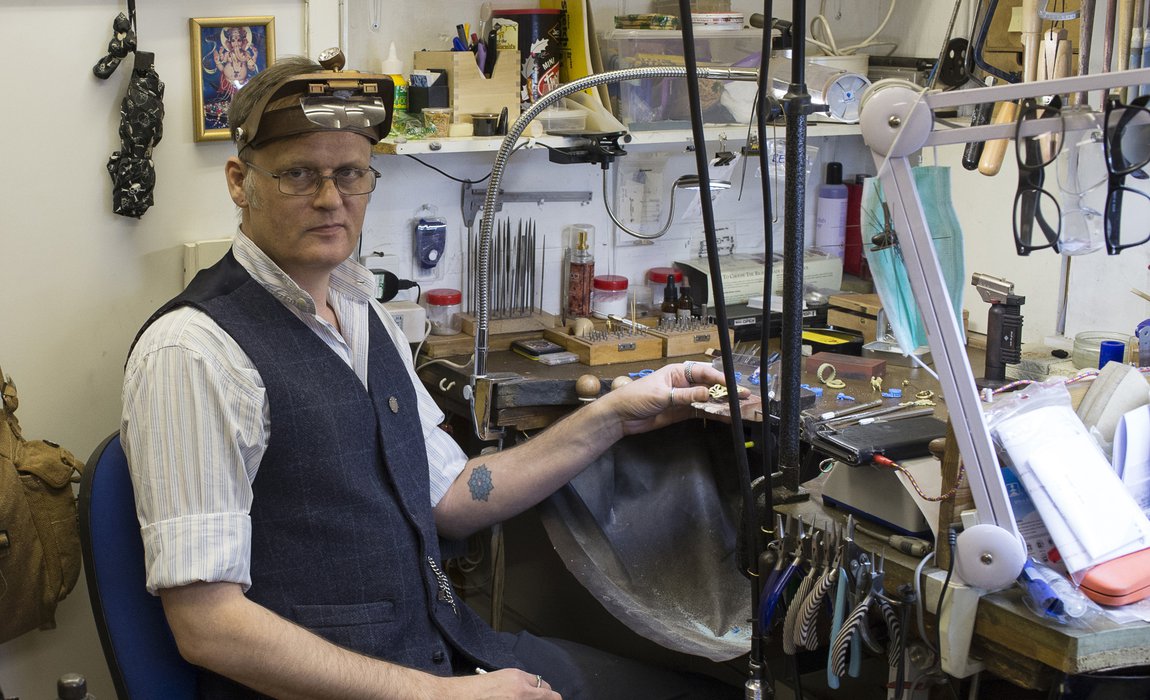
What is wax carving and how is it used in jewellery and silversmithing?
Wax carving is like sculpture, but on a jewellery scale. It enables you to create a lot of things that are very difficult to produce any other way, particularly figurative work.
What sparked your interest in wax carving, how did you discover it for the first time?
I started off doing a City & Guilds course in jewellery making and quickly discovered there were a lot of things that were impossible for me to make. My mother was an antique dealer, and so I was quite familiar with work by Lalique and jewellers like that. All the figurative work - the dragonflies and human figures were impossible to make from sheet and wire. So, when I went off to do my degree at Central Saint Martins, at the end of the first term we had a very short introduction to wax carving. And that's when I realised this was how you make all the things that I didn't know how to make before.
It was quite a revelation and it's opened up huge vistas of possibilities in terms of design and creation. And it's very artistic skill and quite personal. You can develop it - basically it's not just about making mounts in set ways. There's a huge artistic scope to it, so it's incredibly free and fairly simple to set up. Even at a very low level of ability you can create quite interesting things. It's a skill that continues to grow. It's not like you learn how to do set things. There’s a never-ending variety of things that you can create or be inspired by - the whole planet, the entirety of nature and all of the history of art are your playthings.
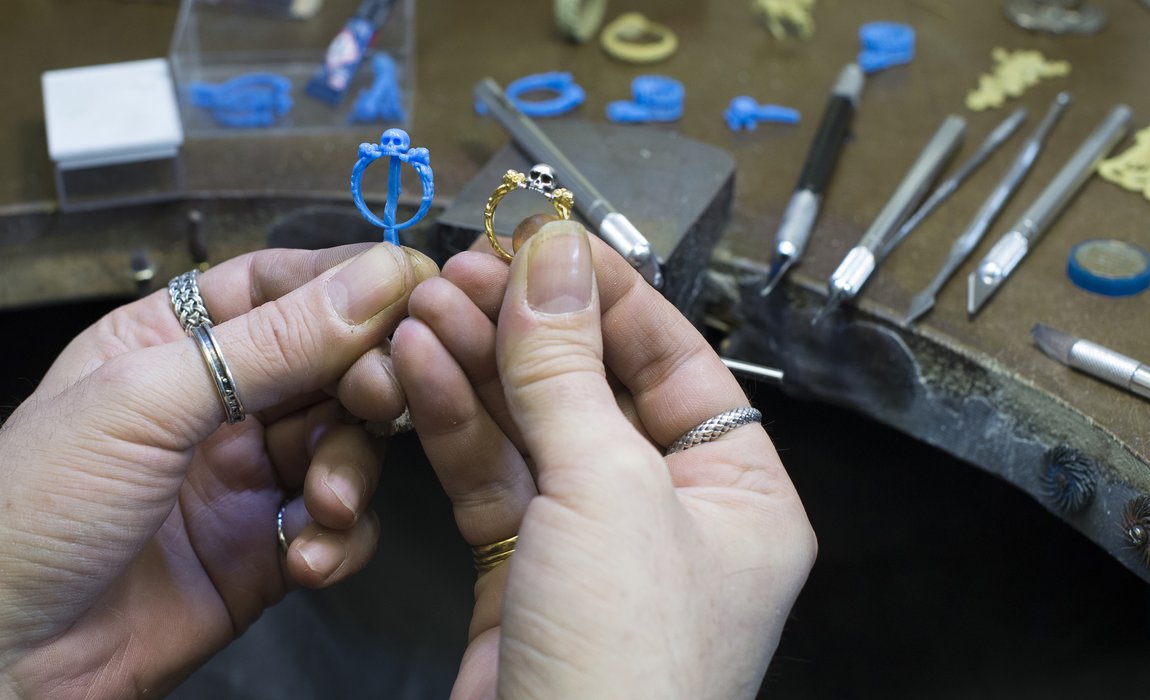
Do you have to be quite naturally skilled at sculpture and carving and things like that, or can you just learn from sheer practice alone?
I'm of the school of thought that believes that if you have enough passion for something, then you can learn how to do it. If you've got a natural aptitude, that's great, but if you really want to learn, you can learn. You‘ll need a lot of patience and a good eye for detail and form.
For figurative work, you'll need to spend quite a lot of time studying anatomy. Look at lots of books on anatomy. In the old days we used to go down to the museums and sketch things in museums. These days, I just tend to Google it and download a few images, although it's still better to actually go and physically draw something because you’ll learn a lot more about the form by doing that, and pretty much every picture that you find, for example, a lion on the internet, will tend to be from pretty much the same angle. Whereas anatomy books will have studies every angle. And if you actually go and look at something in the flesh, then you can look at it from every angle get a far better idea of its form and volume.
So you really have to understand things in the 3D rather than just two dimensional?
It’s a very three-dimensional art. Not a lot of jewellery is three dimensional in the same way. A lot of jewellery is about making a simple shape and then you build bits onto it. Whereas with wax carving you've really got to understand the three-dimensional form. People have this idea that a sculptor sees the sculpture inside a block of marble and to certain extent it's true because you have to be able to visualise that three dimensional object inside that block before you can start removing the unnecessary parts of that block.
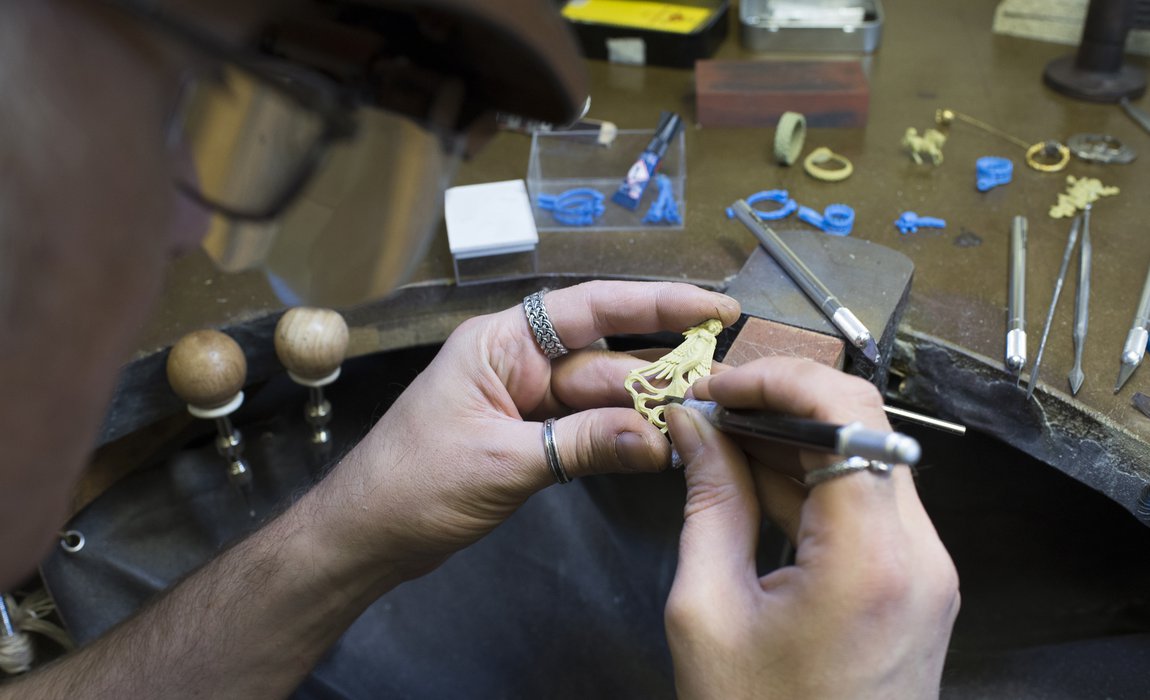
How did you learn the skill and how could someone else start to learn it?
I was introduced to wax carving at Central Saint Martins when they gave us a lump of wax and showed us how to make a rudimentary wax carving tool. And then after that it was all about just practising - trying things out and seeing what happens.
If I was to advise somebody else, I would say, go do one of my courses. In 15 hours, you'll get the first five years of my life experimenting! And I can also recommend my book when it comes out in Spring - it is 25 years of teaching distilled into one book by me and my colleague Danila Tarcinale.
What does the average day as a wax carver look like?
There is no average day! Almost every project idea is entirely different whether I'm sculpting a leopard, or a ring with a bunch of flowers on it or a skull, or I even just reproducing a pebble that somebody likes. It can be incredibly varied. If I was to describe running through a single project that was going to last one day - I would start off having done some visual research and made myself a set of images which I then stick up around my bench. Usually I have these little placeholder things and I'll stick bits of paper on them and I'll have a whole collection of them arranged all around my bench so I've got lots of visual references that I can look at. Sometimes, if I was to do some particular type of animal I might look online and see if I can buy a small plastic toy, which is quite handy for me to look at to get an idea of the visual weight and the body volume. All those kind of things are quite useful.
So, I'd start by getting all my visual references up, then I get myself a block of wax or if I was carving from milliput I’d have a prepared block of milliput and I transfer the design onto that. I cut out the first profile before picking the next profile and getting the rough form out. After that you've kind of got to make a leap of faith and start actually sculpting, this where you need an idea of the form in your head, gradually changing the rough starting form that you've created into a finished piece.
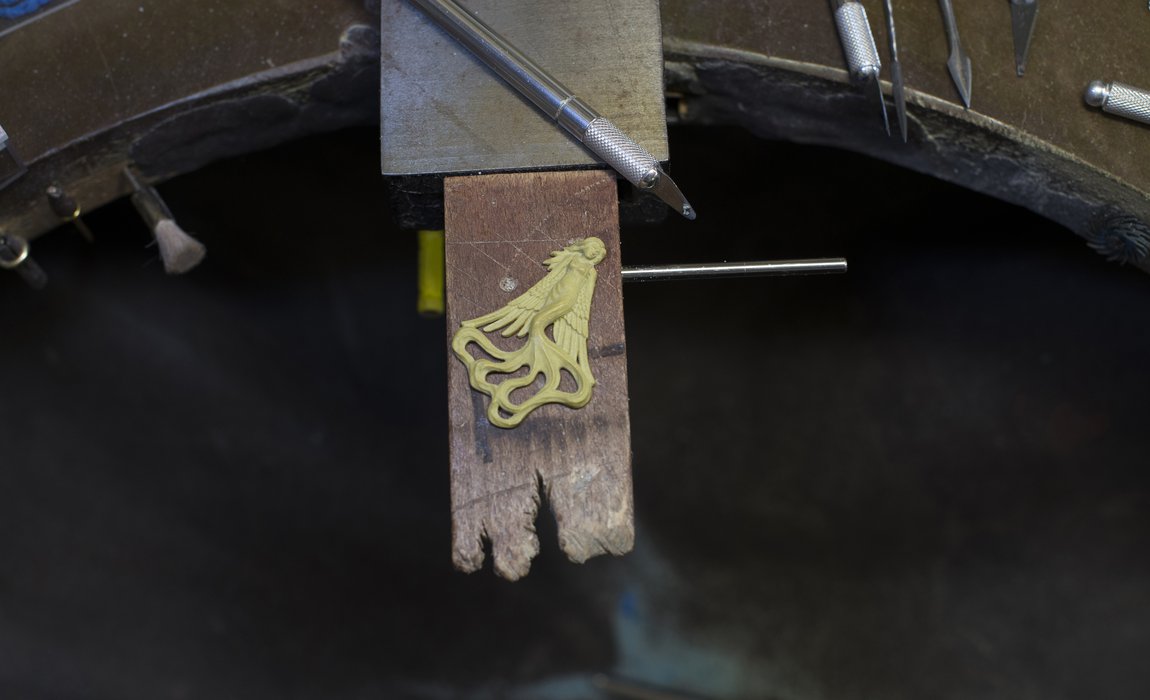
Is it a process where, if you make mistakes, it's easy to rectify them, or do you have to kind of start from scratch?
Some mistakes you can rectify, some you can't! Very occasionally I've had to start from scratch. Probably in 30 years maybe 10 times I've thrown a piece out and started from scratch, but usually I can patch something up with wax. You can melt a bit of extra wax onto the area that you need. I don't particularly like that process because I never feel the wax casts nicely after you've melted it.
With milliput, you can build up little bits of milliput on the areas that you want to redo. Sometimes it's quite temperamental and doesn't want to stick to itself but there are ways of getting around that. But it is practice, you evolve different ways of dealing with different things. So, you never stop learning. Sometimes you learn more from your mistakes more than you learn by getting it right the first time.
How many years you do you need to train and practice to become an excellent wax carver?
Some people have a natural ability and they become quite good fairly quickly. There's this whole idea that you need to spend 10,000 hours doing something to master a skill. 10,000 hours will not automatically make you good at something. Practising intensely while focusing and concentrating and being critical with yourself and pushing yourself for 10,000 hours will definitely make you an expert. Just repeating the same thing over and over for 10,000 hours isn’t going to take you anywhere!
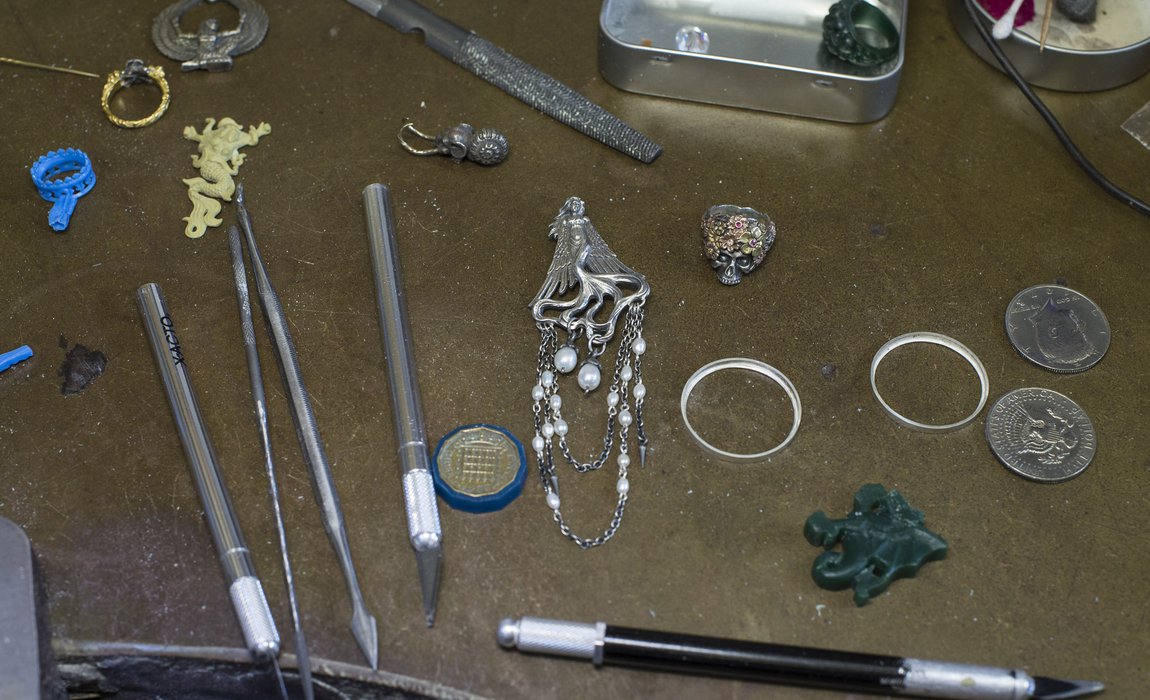
Do you ever get to make just for yourself?
I end up doing a lot of commission work. I do have my own range of jewellery, which I produce with my colleague Danila. And we do occasionally take that out on road and do the odd show, and we sell it online.
Generally, commissions take over almost everything. I started work on a little charm at the four months ago, I think, and it's still only halfway through, and that was one of my personal projects.
In the meantime, I've done probably a couple of dozen things for other clients.
My personal work tends to wind up on the back burner, unless I make specific time, I often have a quiet period in January and February. Sometimes I'll definitely put time aside for myself to make something I want to make. When I used to take part in the competition at the Goldsmiths’ Craft and Design Council Awards, I always used to put aside at least one week at the beginning of January for me to make something to put in the competition. Now I'm a judge I don't make that time for myself anymore.
How many hours would it take to make a detailed piece from start to finish?
It varies quite a lot. Most jobs I do fall in the one to two day category. Although I've come to realise that I'm actually quite fast as a carver. There are a number of groups on Facebook for wax carvers, and people have asked similar questions, “How long does it take to do a detailed ring?”, and I'm thinking like, oh, one, two days maybe, and I'm seeing people posting up like “oh one week, two weeks”. So I think I’m probably quite fast, so for an average person then maybe a week.
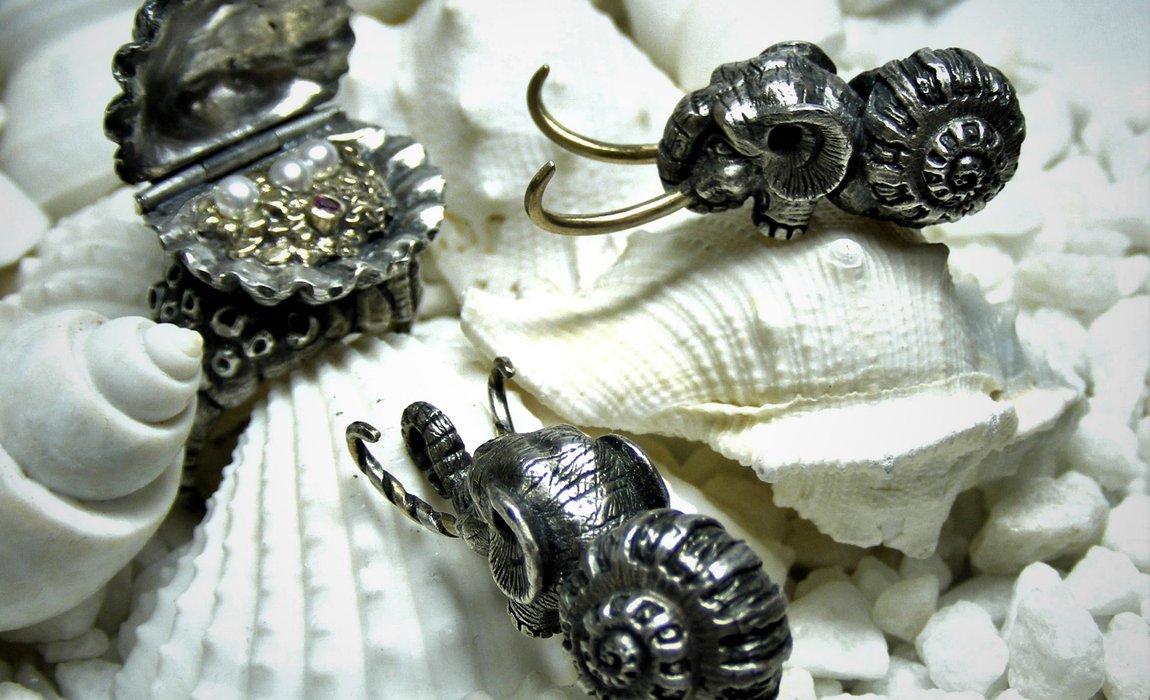 Hermit Elephants discover a Mermaid's Treasure Chest by Russell Lownbrough
Hermit Elephants discover a Mermaid's Treasure Chest by Russell Lownbrough
Have you got a favourite piece that you've made throughout your career?
I've got quite a few favourite pieces, actually I've made quite a lot of things. This is a hermit elephant. It's half snail, half elephant. And that's from a drawing by an artist called Patrick Woodroffe, who I've been a huge fan of for years and years and years. I made it to impress a girl years ago, and it worked a charm and then I thought maybe I'll just get in touch with the artist. So I got in touch with him and said “I've made one of these would you like one”. He was very happy, and we corresponded for a while. He sadly passed away since but that experience was really nice. He also used a photograph of the one that I sent him in an advertising poster for an exhibition that he was doing so this piece is something I am very fond of.
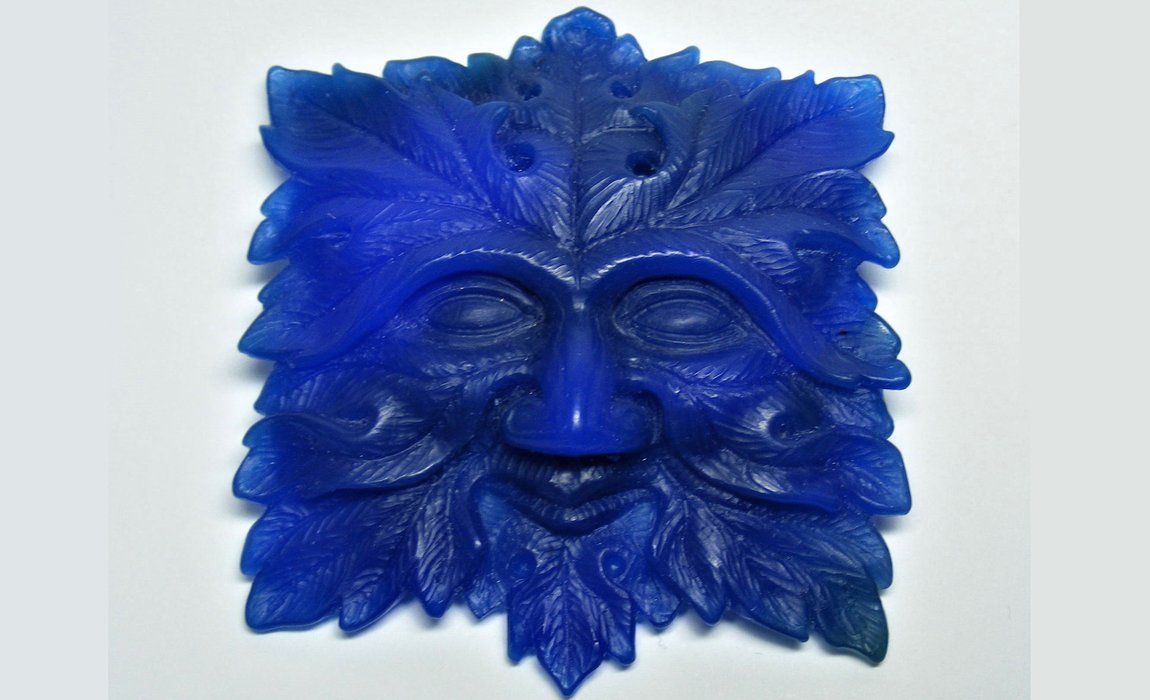 Green Man Belt Buckle by Russell Lownbrough
Green Man Belt Buckle by Russell Lownbrough
I have a few more pieces - this is a fun piece I did this for a Norwegian children's film about pirates. Here we've got a Green Man, I think, this was the first time I won a Silver Award at Goldsmiths Craft and Design Awards. And this is kind of homage to René Lalique, the greatest jeweller of all time. It’s loosely based on one of his one of his pieces.

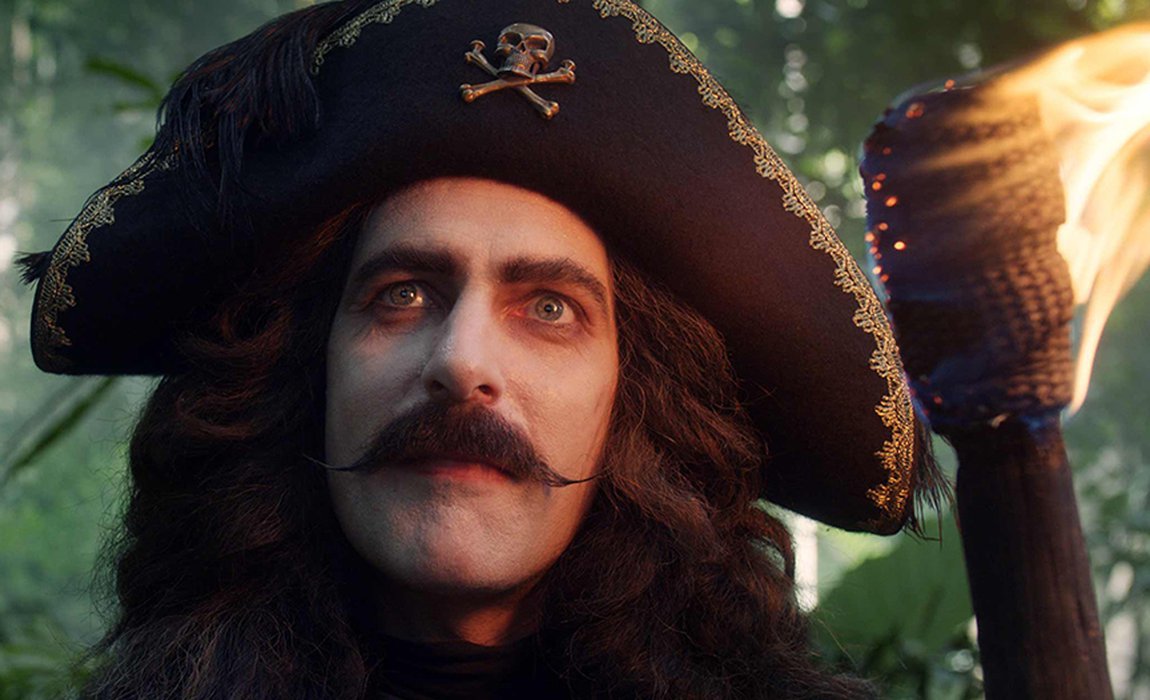
What's the most curious piece you've been asked to make?
Oh, I’ve made a lot of strange things over the years… I do get asked for some odd stuff. A big ritual drinking horn covered in runes that I did for a group of occultists. I did Marilyn Manson’s ring for his initiation into the Church of Satan. I've got a wax of the bottom part of that, there’s a head of Baphomet on the sides, with a big stone with a very fancy setting going on over it.
There's a lot more Gothic and rock and tattoo imagery in Fine Jewellery these days thanks to some high profile jewellers. It’s become a lot more acceptable. When I started out people just kind of laughed at that kind of thing. Now it's a whole range of imagery that's really popular. When you look back at jewellery form the Elizabethan Era is quite rock and roll looking,with quite weird and outlandish compositions. It's only since everything got really dull in the Victorian era, and the Edwardian era. Apart from, you know, Art Nouveau which brought all that kind of wild outlandish fantasy looks out again. I guess there's always a market for it, it's because the high street just looks so dull, really.
Have you ever explored making body jewellery?
Funny you should say that actually, but back in the early 90s, there was a woman called Teena Marie who got in touch with me because she wanted gold body piercing jewellery made. We made a collection, probably the first in the world, of gold body piercing jewellery, and pretty much everything that's done now began with the pioneering work that we did back then. The best quality body piercing jewellery in this country is now made by my colleague Danila.
I kind of gave up the body piercing jewellery about 10 years ago. There’s only so much time you can spend cutting tiny, tiny, tiny threads onto things before it starts to drive you a little bit nuts and I wanted to concentrate more on the wax carving, which was far more artistically fulfilling . So I drifted away from the body piercing and got more into the wax carving while she kept on with the body jewellery. She produces a lot of really very high quality body piercing jewellery.

Do you keep all your wax carvings, and if so, how big is your collection?
I don’t keep all of them, some clients don’t like me to keep them. Some are quite happy for me to keep copies, and I have most of my own as well. I have 3 shoe boxes full of tiny waxes and castings, probably about 1/3 of everything I have done in my career.
Learn more about the careers that make up the jewellery, silversmithing and allied industries. Click below to read our Industry Profiles.